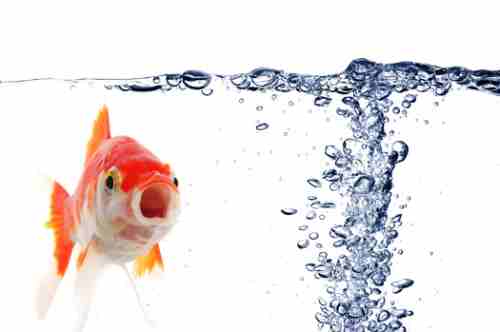Fish tank must have oxygen. Fish cannot survive without oxygen. Low oxygen levels can lead to health problems and can even be fatal for your fish.
The most important thing for aquariums is oxygen. We know it’s essential, but we tend to forget it because we can’t see or feel it. This is until our tanks aren’t getting enough oxygen. Then we start to think about it and try to find ways to increase it.
See Also: Not My Circus Not My Monkeys Memes
Before we can increase the oxygen levels of our aquariums, it is important to understand how our fish get their oxygen. It is not where you think it is!
How can you increase the oxygen level in your fish tank? The best way to increase oxygen in a fish tank is to increase its surface area. The surface agitation and water movement should be increased. This will allow more oxygen to dissolve and less carbon dioxide to escape. An air pump can be used to add fresh oxygen.
How do you know if your tank is low in oxygen?
Many signs will help you determine if your tank has low oxygen levels.
Low Oxygen Symptoms
No alarm or flashing light will go off when the aquarium’s dissolved oxygen level drops too low. The only indicator of trouble is your fish’s behavior.

In the beginning, fish will move less to reduce their oxygen consumption. Fish will be less active and eat less frequently when they experience a drop in oxygen levels. As the oxygen levels drop, fish will show slower breathing and gill movements. They are desperately trying to get more oxygen from the water.
Fish will eventually start to gasp at the surface of the water. This should not be confused for fish breathing at the surface. Like Corydoras catfish, Corydoras bettas, and gouramis, some fish species will occasionally take a slow gulp from the surface. These fish are not likely to take in breath after breath, but this is normal behavior. If any fish does reach the water’s surface to get oxygen, they will frequently gasp, sometimes with wide-open mouths, and suck in the top layer of water that contains more oxygen.
What are the causes of low oxygen levels?
The key to winning the war is knowing! The signs of low oxygen levels in your tank are obvious. Now, let me tell you what the causes are. It won’t take long to identify the root cause of your problem. Let’s get started.
Low Oxygen Levels: Causes
The key to winning the war is knowing! The signs of low oxygen levels in your tank are obvious. Now, let me tell you what the causes are. It won’t take long to identify the root cause of your problem. Let’s get started.
Overstocking
Low oxygen is most commonly caused by overstocking. Overpopulation will require more resources to survive. An aquarium is a space that can be used for a specific purpose. If you don’t have enough oxygen, the aquarium will not function properly.
This is a common mistake made by beginners. Overstocking can also cause many problems.
High water temperature
High water temperatures and low levels of dissolved oxygen (DO) are directly related. Warm water can retain more oxygen than cold water. The ability to carry oxygen decreases with increasing temperature.
Take a look at the table below to get a better idea. When the water temperature is 100°C (212°F), dissolved oxygen turns to zero. Source: pondtrademag.com
Table showing the relationship between temperature and dissolved oxygen.
For fish to survive, the minimum acceptable level of DO is 4-5mg/L.
The ideal temperature range for tropical aquarium fish is 75-80 degrees F. Coldwater fish prefer temperatures below 70 degrees F.
If you’re using a heater, don’t raise the temperature beyond 80 degrees F unless you have an Ich infestation, in which case a temperature of 86 degrees F is recommended.
Waste Accumulation
Low oxygen levels can also be caused by excessive waste accumulation. The main causes of waste accumulation are overstocking, underfeeding, poor maintenance, and inept cleaning.

Larger fish will produce more waste by respiration and feces. Overfeeding and clogging filters can also lead to garbage accumulation. To break down the waste and residue, bacteria require more dissolved oxygen. This reduces the aquarium’s water-oxygen carrying capacity.
Let’s say bacteria fails to break down the extra garbage. If that happens, the extra garbage will eventually decompose, forming toxic gases such as ammonia. This is a poisonous gas that can kill fish and drive away oxygen.
How to Increase Oxygen in Your Fish Tank
Aquarium filter nozzle with bubbles
There are many ways to increase the oxygen level in your aquarium.
- Get an air pump
- Get an air stone
- A waterfall filter can be used.
How do I check the oxygen level in my fish tank?
A portable dissolved oxygen monitor is the best and fastest way to determine how much oxygen your fish tank has.
Humans cannot tell apart from that. It is not visible by the eye, smelled, or felt by the hand. The only way to find out is with an oxygen meter.
Why are my fish gasping for air?
If your fish are constantly begging for oxygen, this usually indicates insufficient dissolved oxygen in your aquarium.
Gasping can sometimes be an indication of other diseases or water temperature that is not right. A gasping fish requires more oxygen 99 percent of the time.
Emergency fish tank
If your fish are in an emergency, like all gasping for oxygen, the above measures will not suffice to save them.
Instead, perform a massive water change of up to 50% right away. The addition of water will provide enough oxygen to ensure that your fish are healthy in the short term. However, you should identify the root cause of your fish’s lack of oxygen once the emergency is resolved.
Conclusion: How to increase oxygen levels in fish tanks
Water can only hold so much oxygen before it becomes saturated. Once water is saturated, it can no longer hold any oxygen. Water that has been saturated is safe for fish to breathe in.
However, supersaturated water can cause problems for fish. Although this is rare, it is a common occurrence and the main cause of gas bubble disease.
To make sure that you don’t get this disease, you can use an easy-to-use, inexpensive, and easily accessible dissolved oxygen test kit, which is available at most fish shops.
However, unless there are serious problems, you don’t need to test your water for oxygen.
Low oxygen levels can cause fish to become sick. Learn what to look for and how you can quickly correct it before it causes damage to your fish.
It is possible to make sure your fish get enough oxygen. Follow the above guidelines and then use one or two of our oxygen-enhancing suggestions to ensure your fish have happy healthy breathing.